The update is a refined one, presenting an evolutionary change in the Superb's design that defines what a facelift is all about. Despite the wheelbase holding steady at 2841 millimeters (111.8 inches), the vehicle has been slightly trimmed in width by 15 mm (0.6 in). However, it has grown in other dimensions; the liftback version extends 43 mm (1.7 in) longer and 12 mm (0.5 in) taller, while the wagon version stretches an additional 40 mm (1.6 in) in length and 5 mm (0.2 in) in height.
While the Superb may look strikingly similar at a glance, the bodywork has been refined for better aerodynamics. The liftback's drag coefficient has been reduced by 10 percent to an impressive 0.23 Cd, and the wagon version boasts a 15 percent reduction, achieving a 0.25 Cd.

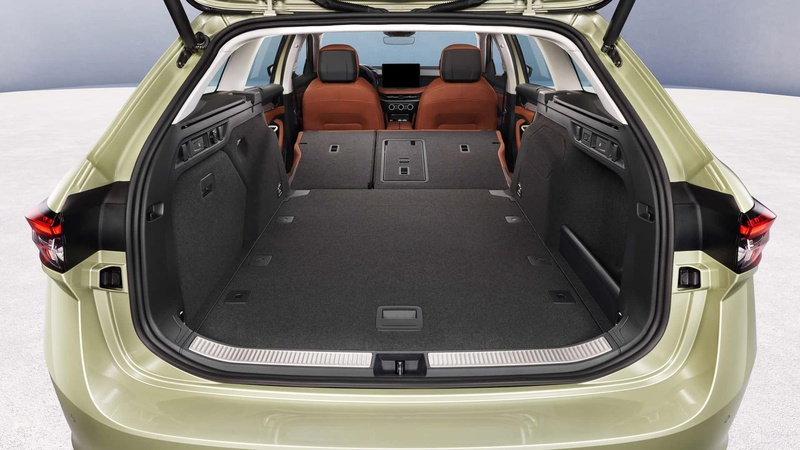

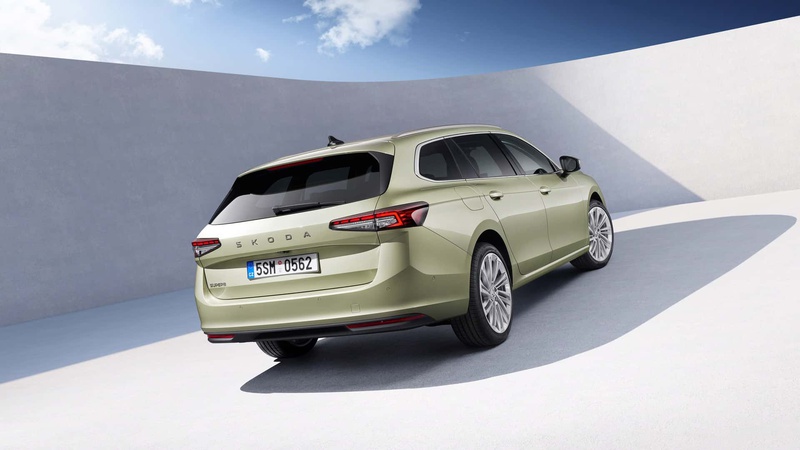

The fourth generation of the Škoda Superb
This sleeker design translates into more headroom for both front and rear passengers, as well as an increase in cargo space. The liftback now offers an additional 20 liters (0.7 cubic feet) for a total of 645 liters (22.7 cu ft), and the wagon benefits from an extra 30 liters (1 cubic feet), bringing it to 690 liters (24.3 cu ft). Choices for alloy wheels range from 16 to 19 inches, and there are eight colors for the exterior, including six new hues: Purity White, Ice Tea Yellow, Cobalt Blue, Ebony Black, Carmine Red, and Pebble Silver.

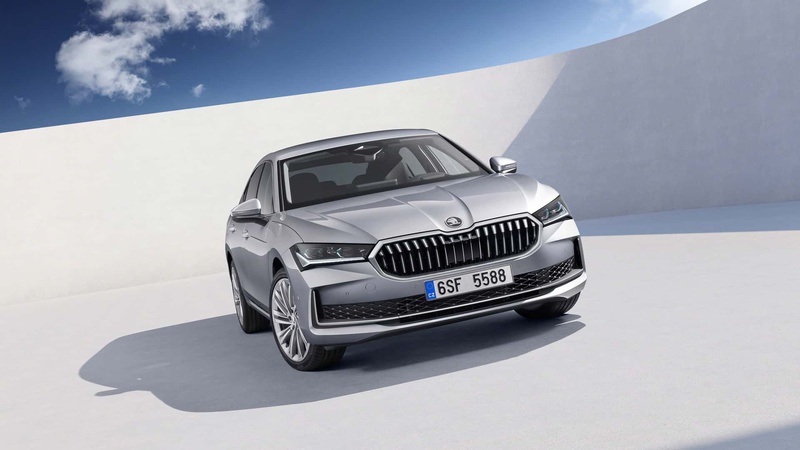



The fourth generation of the Škoda Superb
The Superb's interior has been modernized with a reduction in traditional controls, although essential buttons remain for convenience. The infotainment system has been upgraded with screen sizes of either 10 or 13 inches depending on the chosen trim, while a 10-inch digital instrument cluster becomes a standard feature. For the first time, a head-up display is available at an extra cost.
A novel feature in the center console is the introduction of three knobs with integrated 1.25-inch screens, dubbed 'Smart Dials' by Škoda, which allow customization for various functions including seat heating and ventilation, and interior temperature settings.




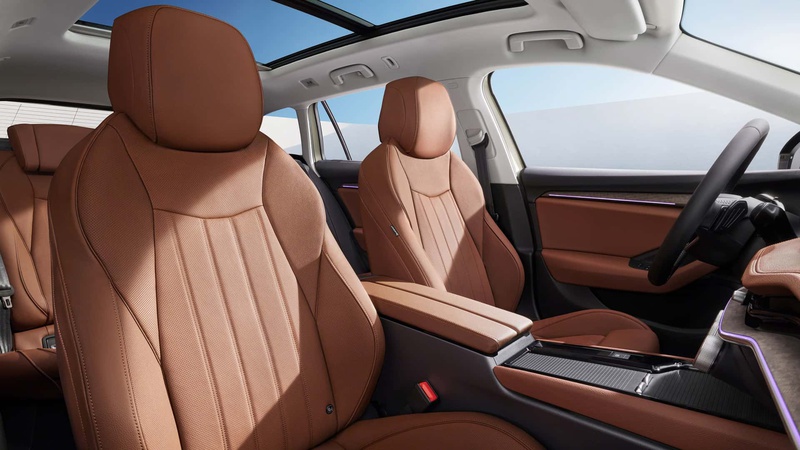
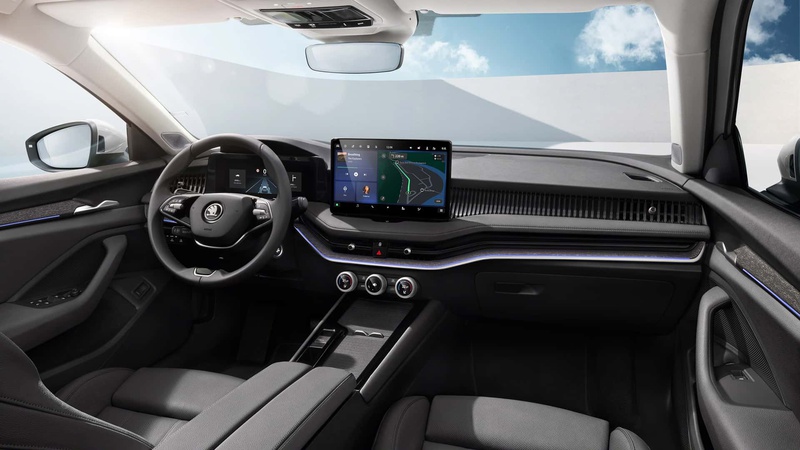
The fourth generation of the Škoda Superb
The engine lineup for the new Superb is familiar, with a 1.5-liter gasoline engine complete with a mild-hybrid system producing 150 hp (110 kW) for the front-wheel drive. More potent 2.0-liter engines are also available, offering 204 hp (150 kW) or 265 hp (195 kW), with the top-tier option including all-wheel drive.
For diesel aficionados, there’s a sole 2.0-liter engine available with either 150 hp (110 kW) and front-wheel drive or 193 hp (142 kW) and all-wheel drive. A seven-speed, dual-clutch automatic transmission is paired with all engines, and gear selection has been moved to the steering column to maximize space.
Škoda's plug-in hybrid version is a wagon exclusive, combining a 1.5-liter gasoline engine with an electric motor to deliver a total of 204 hp (150 kW). It shares its powertrain with the new Kodiaq, is front-wheel drive, and paired with a six-speed DSG. It’s capable of more than 62 miles (100 kilometers) in pure electric range, thanks to a 25.7-kWh battery, which can be charged to 80 percent in just 25 minutes at a 50 kW rate.
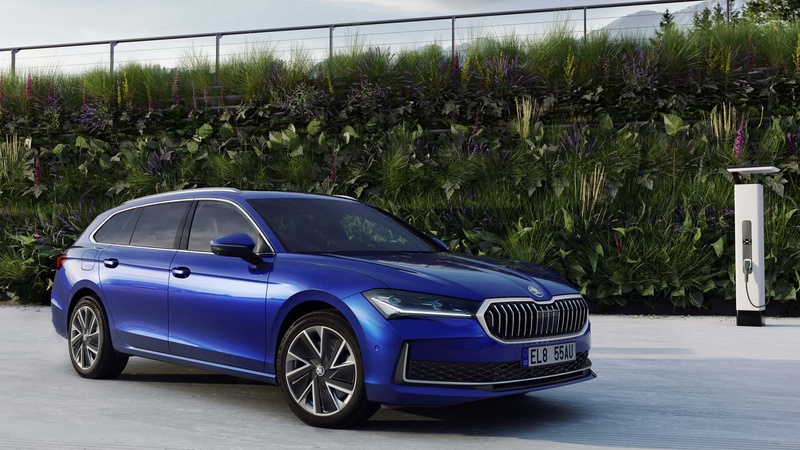

The fourth generation of the Škoda Superb
The Superb continues Škoda's tradition of 'Simply Clever' features, boasting 28 such innovations. Among them are the new Smart Dials, an electrically operated cover for the wagon's load area, and the perennial favorites like the ice scraper in the fuel cap and an umbrella in the driver’s door. Additional practicalities include a dashcam-ready USB port in the rearview mirror and a rearview camera washer.
In terms of technology, the Superb now comes with advanced matrix LED headlights, delivering 40 percent more light output. Enhanced adaptive dampers are now standard on the top-tier Laurin & Klement model, which is offered with all powertrains and both body styles. This premium trim also includes a 14-speaker Canton sound system, massaging front seats, and distinctive leather or leatherette upholstery.
Shifting production from the Czech Republic, the revamped Škoda Superb will now roll off the assembly lines in Slovakia, where it will be produced alongside the VW Passat wagon.
Source: Škoda
.jpg)
